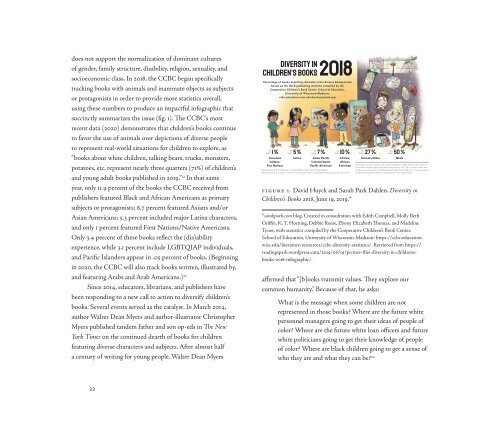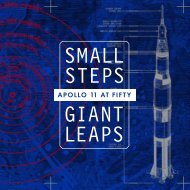Animals Are Us: Anthropomorphism in Children’s Literature; Celebrating the Peter J. Solomon Collection
Why do we tell stories to children through and about animals? Are there reasons why we shouldn’t? Animals Are Us invites explores these questions and more through influential historic examples of anthropomorphism in dialogue with contemporary books drawn from the collection of Peter J. Solomon (Harvard College Class of 1960, MBA 1963) and the holdings of Houghton Library. The exhibition invites you to engage critically with animal anthropomorphism, and delight in the artfulness of this enduring literary genre. Catalog of an exhibition on view at Houghton Library, Harvard University, September 1, 2021 - January 7, 2022.
Why do we tell stories to children through and about animals? Are there reasons why we shouldn’t? Animals Are Us invites explores these questions and more through influential historic examples of anthropomorphism in dialogue with contemporary books drawn from the collection of Peter J. Solomon (Harvard College Class of 1960, MBA 1963) and the holdings of Houghton Library. The exhibition invites you to engage critically with animal anthropomorphism, and delight in the artfulness of this enduring literary genre.
Catalog of an exhibition on view at Houghton Library, Harvard University, September 1, 2021 - January 7, 2022.
Create successful ePaper yourself
Turn your PDF publications into a flip-book with our unique Google optimized e-Paper software.
does not support <strong>the</strong> normalization of dom<strong>in</strong>ant cultures<br />
of gender, family structure, disability, religion, sexuality, and<br />
socioeconomic class. In 2018, <strong>the</strong> CCBC began specifically<br />
track<strong>in</strong>g books with animals and <strong>in</strong>animate objects as subjects<br />
or protagonists <strong>in</strong> order to provide more statistics overall,<br />
us<strong>in</strong>g <strong>the</strong>se numbers to produce an impactful <strong>in</strong>fographic that<br />
succ<strong>in</strong>ctly summarizes <strong>the</strong> issue (fig. 1). The CCBC’s most<br />
recent data (2020) demonstrates that children’s books cont<strong>in</strong>ue<br />
to favor <strong>the</strong> use of animals over depictions of diverse people<br />
to represent real-world situations for children to explore, as<br />
“books about white children, talk<strong>in</strong>g bears, trucks, monsters,<br />
potatoes, etc. represent nearly three quarters (71%) of children’s<br />
and young adult books published <strong>in</strong> 2019.” 22 In that same<br />
year, only 11.9 percent of <strong>the</strong> books <strong>the</strong> CCBC received from<br />
publishers featured Black and African Americans as primary<br />
subjects or protagonists; 8.7 percent featured Asians and/or<br />
Asian Americans; 5.3 percent <strong>in</strong>cluded major Lat<strong>in</strong>x characters,<br />
and only 1 percent featured First Nations/Native Americans.<br />
Only 3.4 percent of <strong>the</strong>se books reflect <strong>the</strong> (dis)ability<br />
experience, while 3.1 percent <strong>in</strong>clude LGBTQIAP <strong>in</strong>dividuals,<br />
and Pacific Islanders appear <strong>in</strong> .05 percent of books. (Beg<strong>in</strong>n<strong>in</strong>g<br />
<strong>in</strong> 2020, <strong>the</strong> CCBC will also track books written, illustrated by,<br />
and featur<strong>in</strong>g Arabs and Arab Americans.) 23<br />
S<strong>in</strong>ce 2014, educators, librarians, and publishers have<br />
been respond<strong>in</strong>g to a new call to action to diversify children’s<br />
books. Several events served as <strong>the</strong> catalyst. In March 2014,<br />
author Walter Dean Myers and author-illustrator Christopher<br />
Myers published tandem fa<strong>the</strong>r and son op-eds <strong>in</strong> The New<br />
York Times on <strong>the</strong> cont<strong>in</strong>ued dearth of books for children<br />
featur<strong>in</strong>g diverse characters and subjects. After almost half<br />
a century of writ<strong>in</strong>g for young people, Walter Dean Myers<br />
figure 1. David Huyck and Sarah Park Dahlen. Diversity <strong>in</strong><br />
<strong>Children’s</strong> Books 2018, June 19, 2019.*<br />
*sarahpark.com blog. Created <strong>in</strong> consultation with Edith Campbell, Molly Beth<br />
Griff<strong>in</strong>, K. T. Horn<strong>in</strong>g, Debbie Reese, Ebony Elizabeth Thomas, and Madel<strong>in</strong>e<br />
Tyner, with statistics compiled by <strong>the</strong> Cooperative <strong>Children’s</strong> Book Center,<br />
School of Education, University of Wiscons<strong>in</strong>-Madison: https://ccbc.education.<br />
wisc.edu/literature-resources/ccbc-diversity-statistics/. Retrieved from https://<br />
read<strong>in</strong>gspark.wordpress.com/2019/06/19/picture-this-diversity-<strong>in</strong>-childrensbooks-2018-<strong>in</strong>fographic/.<br />
affirmed that “[b]ooks transmit values. They explore our<br />
common humanity.” Because of that, he asks:<br />
What is <strong>the</strong> message when some children are not<br />
represented <strong>in</strong> those books? Where are <strong>the</strong> future white<br />
personnel managers go<strong>in</strong>g to get <strong>the</strong>ir ideas of people of<br />
color? Where are <strong>the</strong> future white loan officers and future<br />
white politicians go<strong>in</strong>g to get <strong>the</strong>ir knowledge of people<br />
of color? Where are black children go<strong>in</strong>g to get a sense of<br />
who <strong>the</strong>y are and what <strong>the</strong>y can be? 24<br />
22



